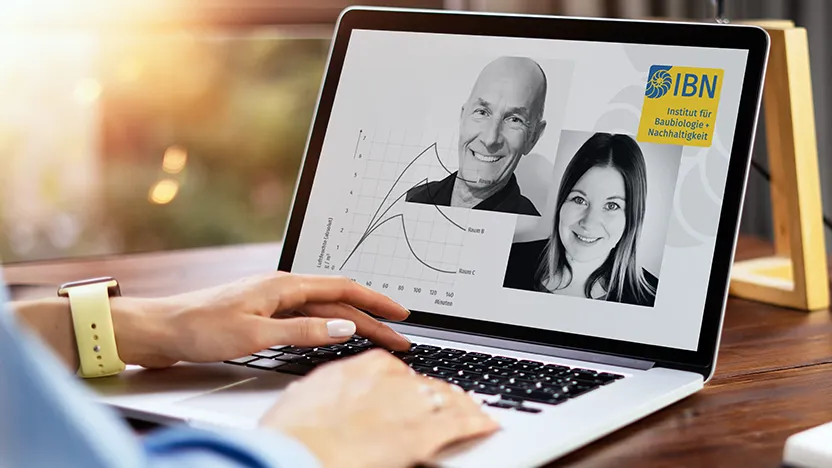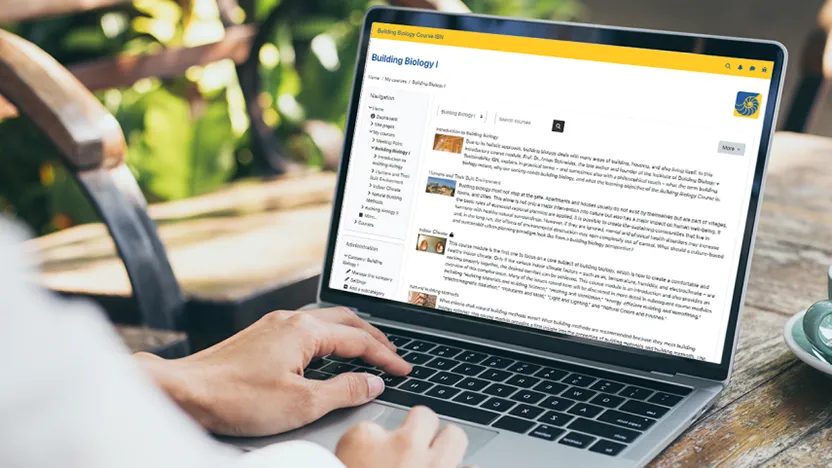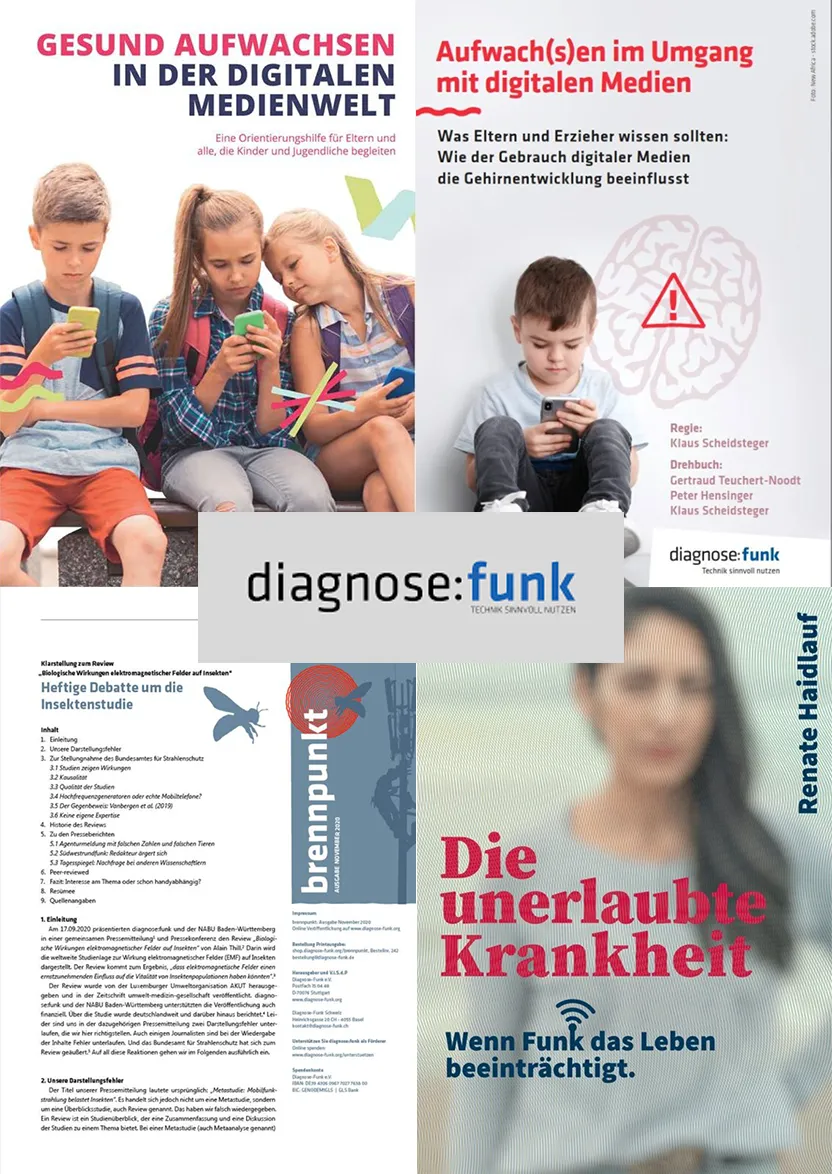How to make mobile communications safer?
In 2011, the World Health Organization (WHO) classified radiofrequency radiation as „possibly carcinogenic.“ Based on new and concerning research findings, leading scientists conclude that the WHO should reconsider its classification and potentially upgrade it to „carcinogenic.“ Numerous studies also point to additional risks, including fertility issues, sleep disturbances, headaches, and learning and behavioral effects. These studies suggest a serious potential for harm.
Therefore, we urgently need preventive policies and RF radiation exposure minimization strategies that are as effective as possible, according to the motto: „More data with less radiation.“ With advanced technology, this can be achieved today while maintaining excellent service quality. The 2023 Report of the Office of Technology Assessment at the German Bundestag (TA) on „Possible Health Effects of Different Frequency Ranges of Electromagnetic Fields (RF-EMF)“ (print edition 20/5646) states that numerous measures can be implemented in various policy areas.
1. Health protection
- Exposure guidelines for the protection against non-ionizing extremely low frequency (ELF) and radiofrequency (RF) electromagnetic fields are being revised. These guidelines will form the basis of all future policies regarding mobile communications.
- The exposure limits for electromagnetic fields (EMF), which are specified in the German Pollution Control Ordinance (26th BImSchV), will be adjusted. These adjustments will be based on the newly developed EMF protection guidelines, which are based on the latest scientific findings on thermal and non-thermal biological effects.
2. Infrastructure and standards
The TA report recommends developing lower-emitting technologies and technical standards to minimize exposure to electromagnetic fields (EMFs) from mobile communications and other sources. Examples of these technologies and standards include:
- National roaming or mobile network sharing, which involves using one network for all instead of several operating in parallel.
- Small cell networks: Existing cell antennas (macrocells) cover large areas and emit strong signals to ensure coverage, even at the edge of each cell and through several buildings. However, this leads to high RF radiation exposure, especially near antenna sites. Small cell networks place transmitters much closer to users and only transmit along roads, not through buildings. This significantly reduces RF radiation exposure.
- Complete rollout of fiber-optic networks: A fast internet connection is a basic necessity and the foundation of communication for the economy and society. Fiber-optic networks provide this service. They are also safe for human health because they do not emit RF radiation.
- Li-Fi – Li-Fi uses light instead of wireless radiation to transmit data. Numerous scientific studies demonstrate that Wi-Fi radiation is harmful to human health. Light Fidelity (Li-Fi) is a safe alternative. Data is transmitted via light or infrared LEDs.
- Precautionary concepts of mobile communications: Municipalities can play a crucial role in determining where cell antennas are placed in the mobile communications infrastructure. They can do so by initiating the dialogue procedure in accordance with Section 7a of the 26th BImSchV. This process identifies locations with the lowest emissions for new mobile phone base stations.
3. Consumer protection
- Interoperability: One device for all networks. Wouldn’t it be convenient if our (mobile) devices always automatically used the best network with the lowest RF radiation exposure for phone calls, emergencies, and data connections? Outdoors, national roaming is an option via the cell phone network. Indoors, coverage is possible via a wired local area network (LAN) (with an adapter, if necessary), DECT, Wi-Fi calling, or light fidelity (Li-Fi) – all with the same device. This would eliminate the need to flood buildings with cell phone radiation to ensure accessibility (see small cell networks).
- Cable connection: All devices that can be used to connect to the internet have a cable connection for data transmission (LAN or USB). For radiation protection reasons, communication via a wireless connection alone is not permitted. There must always be a cable alternative for communication. If devices only have a USB connection, a USB-to-LAN adapter must be included at the point of sale.
- Transmit power control (Eco): In the future, all Wi-Fi devices (routers and end devices) on the market must have dynamic power control (e.g., up to 3% of the transmit power) and the option to switch off automatically (Eco Wi-Fi). The same applies to DECT cordless phones (Eco DECT). They will no longer emit RF radiation continuously, but only during calls. They will also feature dynamic power control (base station and handset). Eco mode is the only permitted operating mode.
- Public information: The TA report cites „increased public information“ as a political option. This includes awareness campaigns and the promotion of preventive measures regarding possible risks of cancer, fertility problems, and other health issues for which there is evidence-based information.
- Age restrictions for children: The psychosocial consequences of using smartphones, tablets, and smartwatches, as well as the effects of RF radiation exposure, are particularly serious for children under the age of 16. Therefore, nationwide, the use of mobile devices will only be permitted for use by children aged 16 and over.
4. Protection of minorities:
- An increasing number of people are affected by electromagnetic hypersensitivity (EHS), which is caused by prolonged exposure to electromagnetic fields. The government is responsible for providing these individuals with medical care and protection. Therefore, EHS is recognized as an environmentally related illness. Environmental medicine services will be included in the list of standard care services provided by statutory health insurance.
- Protection zones: The TA report calls for the establishment of zones where the use of cell phones or the installation of wireless transmission equipment is prohibited or severely restricted. Similar to the protection of non-smokers and in the spirit of accessibility, mobile phone-free and Wi-Fi-free zones are being established in public buildings, hospitals, and on local and regional public transportation to protect people with electromagnetic hypersensitivity.
5. Environmental protection and nature conservation
- Nature reserves: Laboratory studies have proven that RF radiation can harm insects and plants. This justifies taking precautionary measures, especially since insects are exposed to various environmental pollutants in nature. Therefore, no new mobile phone base stations may be built or operated in nature reserves.
- Energy consumption: The introduction of national roaming (see above) will reduce both RF radiation exposure and energy consumption for mobile communications. The introduction of interoperable devices (see above) will eliminate the need for cell phone network coverage in buildings, dramatically reducing energy consumption. The right to an analog life in all areas of society is guaranteed by law.
6. Research
- The EMF Portal (emf-portal.org), which is maintained by RWTH Aachen University, has served as the reference database of the World Health Organization (WHO) since 2011. It is the internationally recognized database for studies on non-ionizing extremely low frequency (ELF) and radiofrequency (RF) electromagnetic fields. Until 2017, the Federal Ministry for the Environment financed the preparation of independent study reviews (summaries). The federal government has again commissioned the EMF Portal to prepare such reviews, which will enable politicians and the public to form an opinion on the state of research. Funding will come from the federal budget.
- Studies involving electrosensitive individuals will be commissioned as proposed in the TA report. These studies aim to provide a scientific basis for a better understanding of the symptoms of electromagnetic hypersensitivity (EHS). The possible interactions between ELF and RF electromagnetic fields and other environmental pollutants, such as pesticides, climate effects, or air pollutants, are currently unknown. However, these interactions must be investigated urgently because experience in ecotoxicology shows that they exist and cause disproportionate environmental damage.
7. Democratic participation
- Risk governance will change based on the proposals in the TA report. Open and broad participation by stakeholders, including civil society groups, will enable the development of a shared understanding of the issue. It is important to give interested public groups a say before political decisions are made.
- This is the second, abridged publication of an article originally published in the Kompakt magazine by diagnose:funk e.V.
- Report of the Office of Technology Assessment at the German Bundestag (TA) on “Possible Health Effects of Different Frequency Ranges of Electromagnetic Fields (RF-EMF)”
EN | DE
This is a translation of “Wie mobile Kommunikation gesünder gestalten?“
Translator
Katharina Gustavs is a Building Biology Professional in Victoria, Canada, who translated the Building Biology Online Course IBN.
info@katharinaconsulting.com | katharinaconsulting.com
Ihre Stimme zählt
Kommentarregeln:
Wir sind neugierig, was Sie zu sagen haben. Hier ist Raum für Ihre Meinung, Erfahrung, Stellungnahme oder ergänzende Informationen. Bitte beachten Sie bei Ihrem Kommentar folgende Regeln:
- Bitte keine Fragen: Auf dieser kostenlosen Informationsplattform können wir keine Fragen beantworten - bitte stellen Sie Ihre Fragen direkt an unsere Autor*innenAutor*innen.
- Bitte keine Werbung: Gerne können Sie auf Ihre Produkte/Dienstleistungen mit einem Werbebanner aufmerksam machen.

Wie werde ich
Baubiolog*in IBN?

How to become a Building Biology Consultant IBN?
Nachhaltig weiterbilden
Know-how, Zusatzqualifikationen und neue berufliche Möglichkeiten für Baufachleute sowie alle, die sich für gesundes, nachhaltiges Bauen und Wohnen interessieren.
Unser Kompetenz-Netzwerk
Hier finden Sie unsere qualifizierten Baubiologischen Beratungsstellen und Kontakte im In- und Ausland nach Standort und Themen sortiert.
Über die Baubiologie
Die Baubiologie beschäftigt sich mit der Beziehung zwischen Menschen und ihrer gebauten Umwelt. Wie wirken sich Gebäude, Baustoffe und Architektur auf Mensch und Natur aus? Dabei werden ganzheitlich gesundheitliche, nachhaltige und gestalterische Aspekte betrachtet.
25 Leitlinien
Für einen schnellen, aufschlussreichen Überblick haben wir in 25 Leitlinien der Baubiologie die wichtigsten Parameter herausgearbeitet, sortiert und zusammengefasst. In 15 Sprachen, als PDF oder als Plakat erhältlich.


0 Kommentare